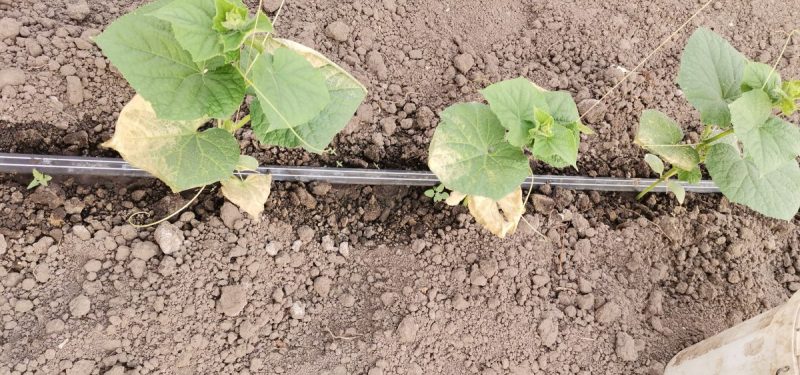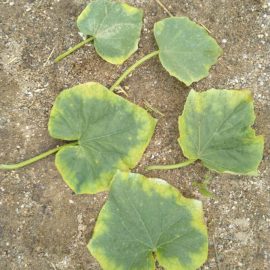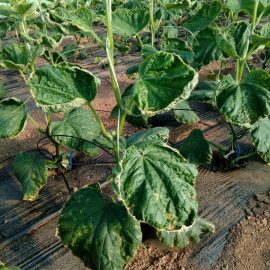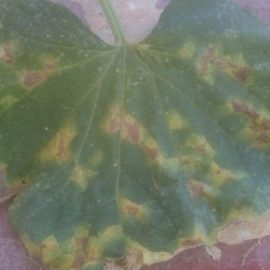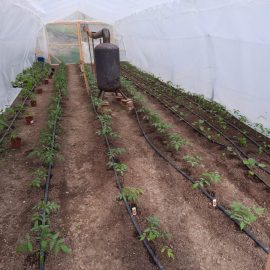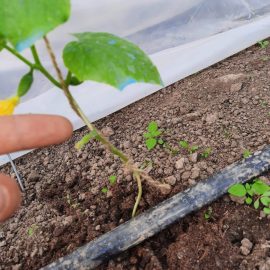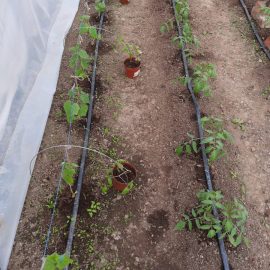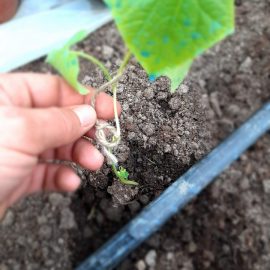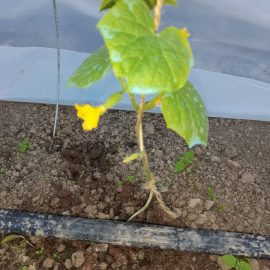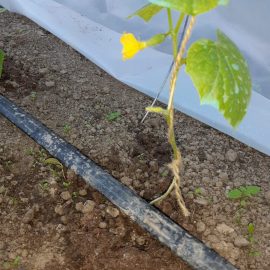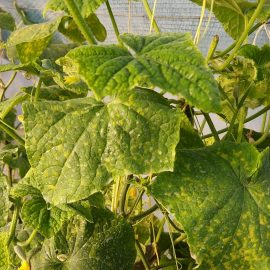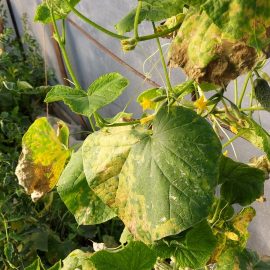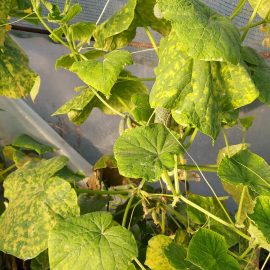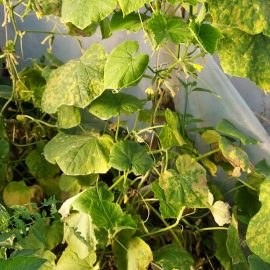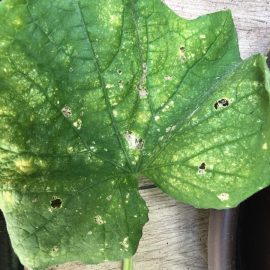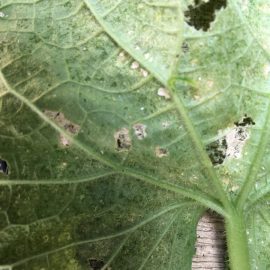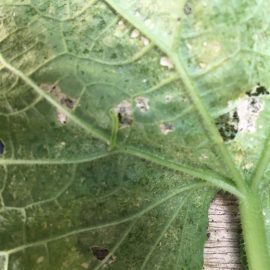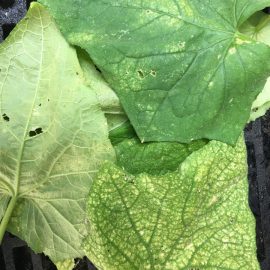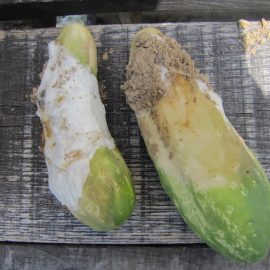Cucumber – fertilization at different stages of crop development
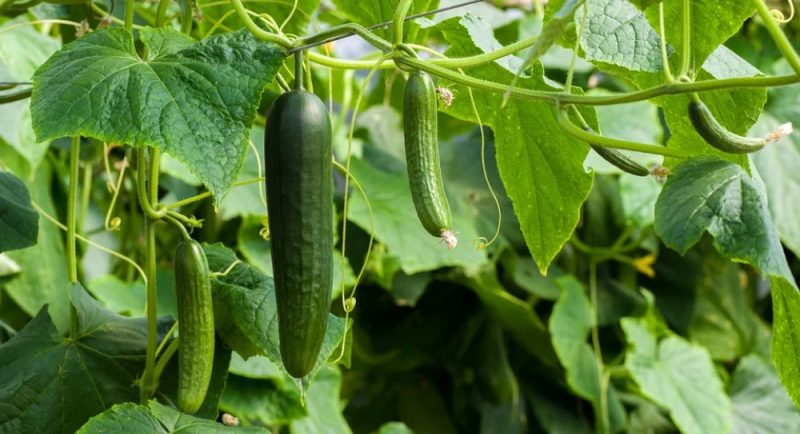
The cucumber crop is of great economic importance, being one of the most popular species worldwide. The greatest demand occurs in the fall when cornichon varieties are used for processing by canning. They are also used in cosmetics, making different lotions and creams for skin care.
The cucumber (Cucumis sativus L) is part of the Cucurbitaceae family, one of the most important families. It originates from various countries in Asia and Africa, representing one of the oldest cultivated vegetables.
It is a vegetable plant that can be grown all year round either in protected areas or in the field. Cucumber is an annual, herbaceous plant, its root system is poorly developed, so it is difficult for the plant to recover if it is injured. As a result, transplanting is more difficult.
The stem is creeping or climbing, fragile in the first part of the vegetative growth period, and it becomes lignified as the plant matures. To improve branching and to form a larger number of female flowers, pinch the stem when the plants are small (4-5 leaves).
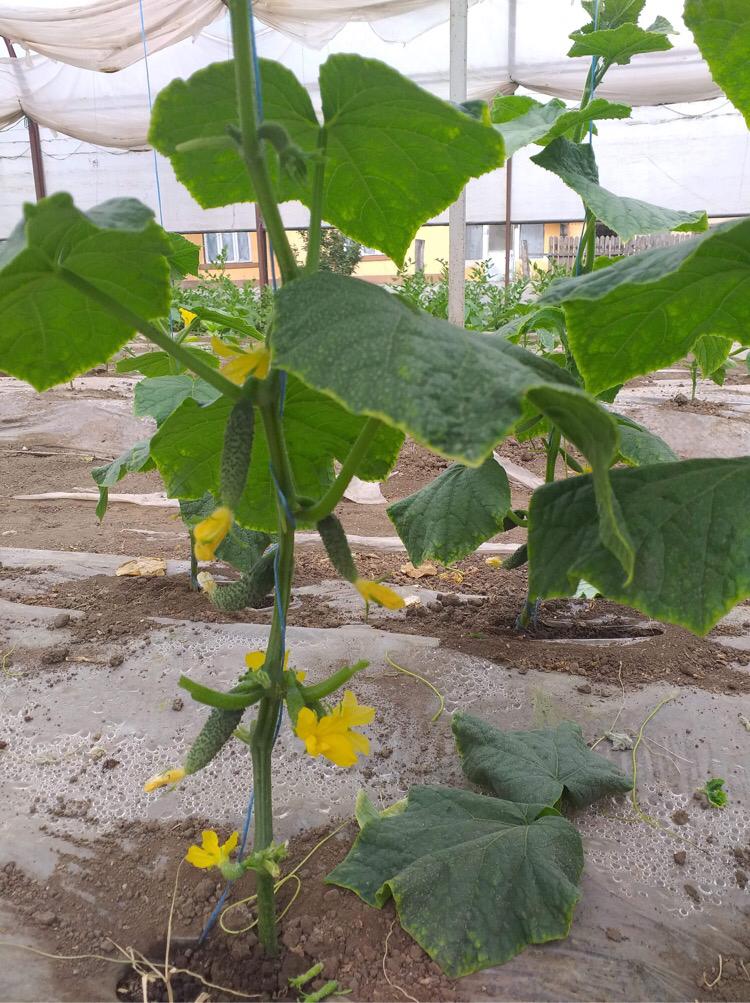
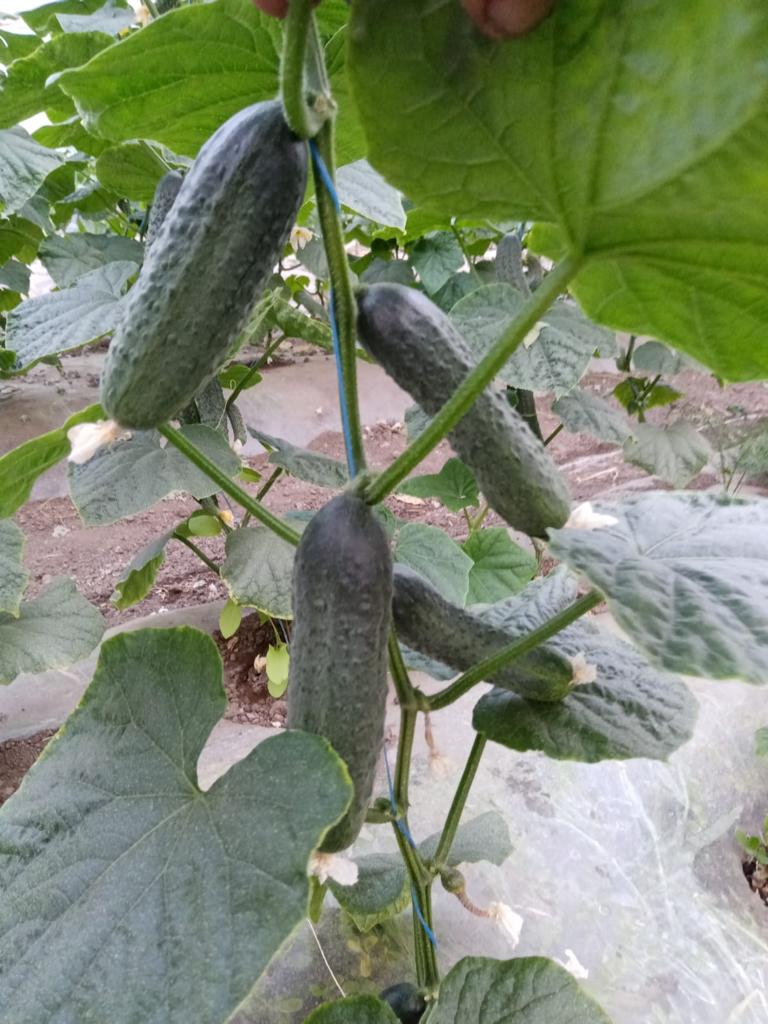
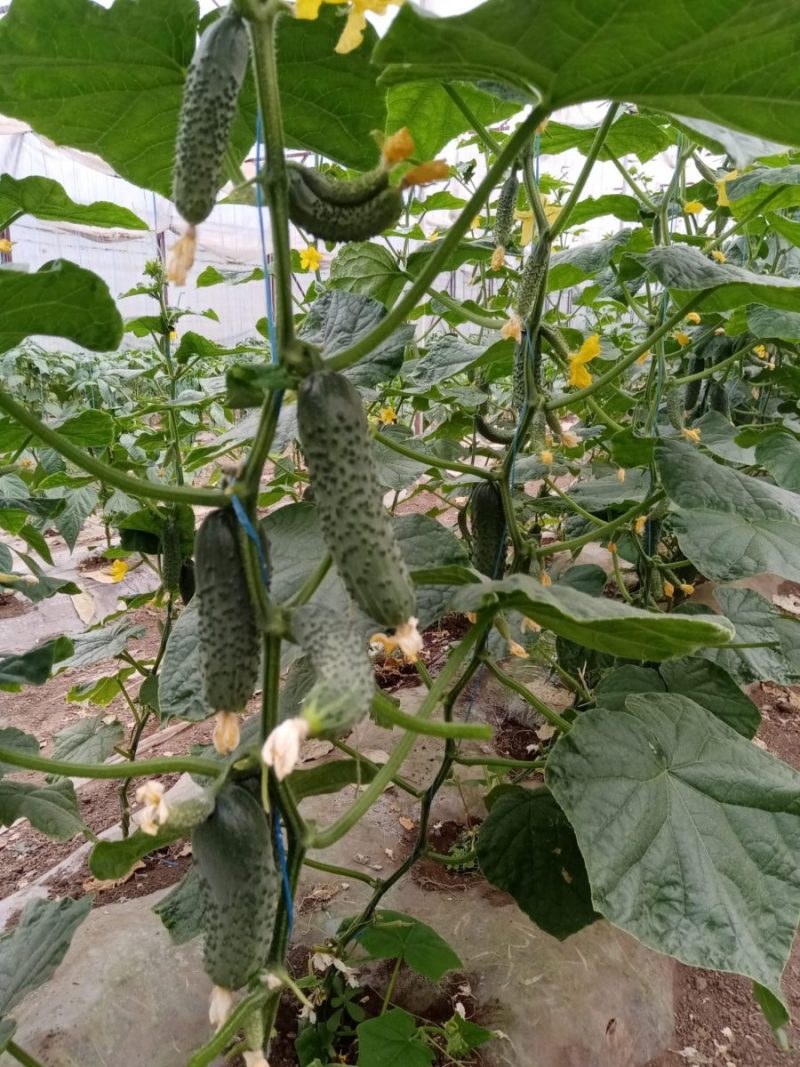
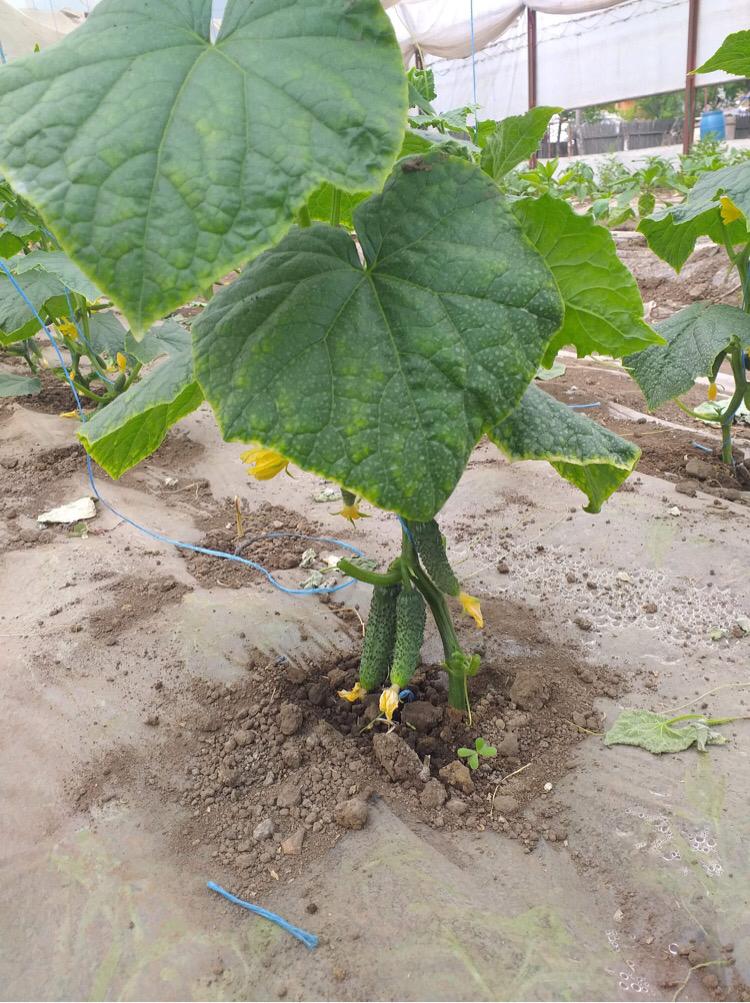
Critical phases of cucumber nutrition
During vegetation, there are a few critical periods of nutrition. This is the time when, if the plants do not have the optimum amount of nutrients available, certain processes occur which affect the plants’ growth and development, resulting in poor production in terms of quality and quantity.
- The first 6-8 leaves (the most consumed element is N);
- Flower bud emergence;
- Beginning of flowering (highest requirements in this phase are for P and microelements like B, Cu, Mo);
- Beginning of fruit ripening (highest requirements are for K and B).
Recommended products
-
You can find products on a different store
Change Store -
You can find products on a different store
Change Store -
You can find products on a different store
Change Store -
You can find products on a different store
Change Store -
You can find products on a different store
Change Store -
You can find products on a different store
Change Store -
You can find products on a different store
Change Store -
You can find products on a different store
Change Store -
You can find products on a different store
Change Store -
You can find products on a different store
Change Store -
You can find products on a different store
Change Store -
You can find products on a different store
Change Store -
You can find products on a different store
Change Store -
You can find products on a different store
Change Store -
You can find products on a different store
Change Store -
You can find products on a different store
Change Store -
You can find products on a different store
Change Store -
You can find products on a different store
Change Store -
You can find products on a different store
Change Store -
You can find products on a different store
Change Store -
You can find products on a different store
Change Store -
You can find products on a different store
Change Store -
You can find products on a different store
Change Store -
You can find products on a different store
Change Store
The role of macronutrients in cucumber crop
Nitrogen
In general, all crops need large amounts of nitrogen due to its direct influence on the plant’s growth process. It plays a role in the storage and transfer of genetic information, but also in enzyme synthesis and enzyme activity.
Nitrogen use is conditioned during the growing season by several factors, such as soil pH, species, plant age. Nitrogen plays an important role in the photosynthesis process.
Phosphorus
Due to the complex functions it fulfils in the plant, it cannot be replaced by any other nutrient. Phosphorus is essential for the normal development of the root system, stem, flower formation and early fruit ripening. It is responsible for storing energy and transporting it into the cell.
Potassium
This element has an important role in stomatal activity, thus regulating the water regime of the plant cells. Potassium indirectly stimulates the nutrient absorption in the plant. The ability of plants to protect themselves against diseases, pests and climatic conditions is given by the action of potassium. Potassium not only influences the resistance of the plants but also the quality of the crops.
Calcium
Most of the Ca inside the plant is found in the cell walls, ensuring their elasticity and helping to bind the cells together. Lack of this element can cause flower abortion and the appearance of small, cup-shaped leaves.
Magnesium
It is a very important macroelement, which acts throughout the vegetation period, fulfilling several functions such as: it is the central component of chlorophyll which acts in the photosynthesis process, it is the phosphorus carrier in plants, it is involved in the cell division process.
Sulfur
It is a fundamental nutrient in plant production because it performs many functions, such as: it acts in the process of chlorophyll formation, it plays an important role in the formation of proteins, vitamins and enzymes, it helps plants to overwinter.
How macroelement deficiencies manifest in cucumber crops
Nitrogen deficiency
- Mature leaves turn pale green, once the deficiency increases, the leaves become chlorotic (uniformly yellow);
- In case of a severe deficiency, the plant turns completely yellow;
- The rammification process also decreases, resulting in short-sized plants;
- The percentage of flower binding decreases;
- Growth is delayed;
- Cucumber fruits suffering from nitrogen deficiency are deformed.
Measures to correct the deficiency:
- periodic fertilizing with products containing N.
Recommended products
-
You can find products on a different store
Change Store -
You can find products on a different store
Change Store -
You can find products on a different store
Change Store -
You can find products on a different store
Change Store -
You can find products on a different store
Change Store -
You can find products on a different store
Change Store -
You can find products on a different store
Change Store -
You can find products on a different store
Change Store -
You can find products on a different store
Change Store -
You can find products on a different store
Change Store -
You can find products on a different store
Change Store -
You can find products on a different store
Change Store -
You can find products on a different store
Change Store -
You can find products on a different store
Change Store -
You can find products on a different store
Change Store -
You can find products on a different store
Change Store -
You can find products on a different store
Change Store -
You can find products on a different store
Change Store -
You can find products on a different store
Change Store -
You can find products on a different store
Change Store -
You can find products on a different store
Change Store -
You can find products on a different store
Change Store -
You can find products on a different store
Change Store -
You can find products on a different store
Change Store
Phosphorus deficiency
- Phosphorus deficiency manifests from the base towards the top;
- The root system develops slowy;
- Fruit ripening is delayed;
- On the leaves, symptoms appear at the base and then spread to the top;
- Leaves turn darker and then turn purple;
- Insufficient P reduces photosynthesis.
Measures to correct the deficiency:
- Dispersing and incorporating P fertilisers;
- Using liquid fertilisers containing P.
Recommended products
-
You can find products on a different store
Change Store -
You can find products on a different store
Change Store -
You can find products on a different store
Change Store -
You can find products on a different store
Change Store -
You can find products on a different store
Change Store -
You can find products on a different store
Change Store -
You can find products on a different store
Change Store -
You can find products on a different store
Change Store -
You can find products on a different store
Change Store -
You can find products on a different store
Change Store -
You can find products on a different store
Change Store -
You can find products on a different store
Change Store -
You can find products on a different store
Change Store -
You can find products on a different store
Change Store -
You can find products on a different store
Change Store -
You can find products on a different store
Change Store -
You can find products on a different store
Change Store -
You can find products on a different store
Change Store -
You can find products on a different store
Change Store -
You can find products on a different store
Change Store -
You can find products on a different store
Change Store -
You can find products on a different store
Change Store -
You can find products on a different store
Change Store -
You can find products on a different store
Change Store
Potassium deficiency
- K deficiency is generally manifested by chlorosis along the leaf margins;
- K deficiency appears on mature leaves at the base and increases towards the tip;
- Foliage turgidity loss leads to wilting appearance.
Measures to correct the deficiency:
- Using K-based fertilizers.
Recommended products
-
You can find products on a different store
Change Store -
You can find products on a different store
Change Store -
You can find products on a different store
Change Store -
You can find products on a different store
Change Store -
You can find products on a different store
Change Store -
You can find products on a different store
Change Store -
You can find products on a different store
Change Store -
You can find products on a different store
Change Store -
You can find products on a different store
Change Store -
You can find products on a different store
Change Store -
You can find products on a different store
Change Store -
You can find products on a different store
Change Store -
You can find products on a different store
Change Store -
You can find products on a different store
Change Store -
You can find products on a different store
Change Store -
You can find products on a different store
Change Store -
You can find products on a different store
Change Store -
You can find products on a different store
Change Store -
You can find products on a different store
Change Store -
You can find products on a different store
Change Store -
You can find products on a different store
Change Store -
You can find products on a different store
Change Store -
You can find products on a different store
Change Store -
You can find products on a different store
Change Store
Calcium deficiency
- Calcium deficiency in cucumbers leads to dark brown or greyish brown rot (blossom end rot);
- Flowers may abort and terminal buds may degenerate;
- Fruits do not ripen (remain raw), their size is small and their appearance may be slightly curled.
Measures to correct the deficiency:
- Specific works to reduce the acidity;
- Avoiding excessive fertilization with K, N, and Mg as much as possible.
- Using liquid or solid fertilizers containing Ca.
Recommended products
-
You can find products on a different store
Change Store -
You can find products on a different store
Change Store -
You can find products on a different store
Change Store -
You can find products on a different store
Change Store -
You can find products on a different store
Change Store -
You can find products on a different store
Change Store -
You can find products on a different store
Change Store -
You can find products on a different store
Change Store -
You can find products on a different store
Change Store -
You can find products on a different store
Change Store -
You can find products on a different store
Change Store -
You can find products on a different store
Change Store -
You can find products on a different store
Change Store -
You can find products on a different store
Change Store -
You can find products on a different store
Change Store -
You can find products on a different store
Change Store -
You can find products on a different store
Change Store -
You can find products on a different store
Change Store -
You can find products on a different store
Change Store -
You can find products on a different store
Change Store -
You can find products on a different store
Change Store -
You can find products on a different store
Change Store -
You can find products on a different store
Change Store -
You can find products on a different store
Change Store
Magnesium deficiency
- Mg deficiency can be caused by a large amount of precipitation;
- It can also occur on soils low in organic matter;
- In the early phase, it appears on the basal leaves, then spreads to the upper leaves.
Measures to correct the deficiency:
- Applying fertilizers with Mg.
Recommended products
-
You can find products on a different store
Change Store -
You can find products on a different store
Change Store -
You can find products on a different store
Change Store -
You can find products on a different store
Change Store -
You can find products on a different store
Change Store -
You can find products on a different store
Change Store -
You can find products on a different store
Change Store -
You can find products on a different store
Change Store -
You can find products on a different store
Change Store -
You can find products on a different store
Change Store -
You can find products on a different store
Change Store -
You can find products on a different store
Change Store -
You can find products on a different store
Change Store -
You can find products on a different store
Change Store -
You can find products on a different store
Change Store -
You can find products on a different store
Change Store -
You can find products on a different store
Change Store -
You can find products on a different store
Change Store -
You can find products on a different store
Change Store -
You can find products on a different store
Change Store -
You can find products on a different store
Change Store -
You can find products on a different store
Change Store -
You can find products on a different store
Change Store -
You can find products on a different store
Change Store
Sulfur (S) deficiency
- Sulfur deficiency generally occurs in very wet areas;
- Sulfur deficiency shows symptoms similar to nitrogen deficiency;
- Symptoms appear first on growing tips and then on young leaves;
- Photosynthesis is reduced;
- Vegetative growth is reduced.
Measures to correct the deficiency:
- Applying solid or liquid fertilizers with high S content.
Recommended products
-
You can find products on a different store
Change Store -
You can find products on a different store
Change Store -
You can find products on a different store
Change Store -
You can find products on a different store
Change Store -
You can find products on a different store
Change Store -
You can find products on a different store
Change Store -
You can find products on a different store
Change Store -
You can find products on a different store
Change Store -
You can find products on a different store
Change Store -
You can find products on a different store
Change Store -
You can find products on a different store
Change Store -
You can find products on a different store
Change Store -
You can find products on a different store
Change Store -
You can find products on a different store
Change Store -
You can find products on a different store
Change Store -
You can find products on a different store
Change Store -
You can find products on a different store
Change Store -
You can find products on a different store
Change Store -
You can find products on a different store
Change Store -
You can find products on a different store
Change Store -
You can find products on a different store
Change Store -
You can find products on a different store
Change Store -
You can find products on a different store
Change Store -
You can find products on a different store
Change Store














































































































































































































































































































































































































































